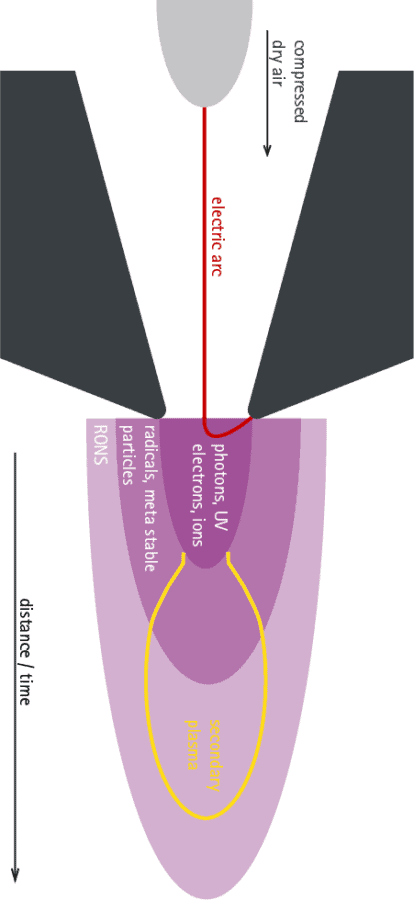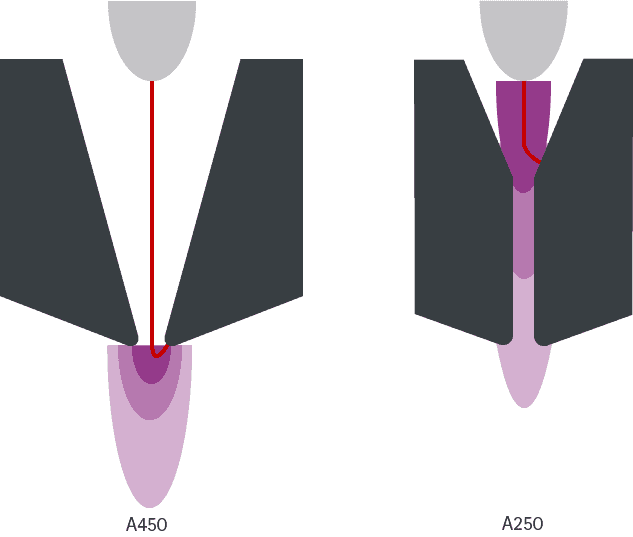Potential
Plasma is by definition an excited gas and thus contains a mixture of short-living species, such as electrons, ions, radicals and neutral particles. The charged species are problematic, if ESD sensitive components are exposed to plasma treatment. Since especially the charged species have a short lifetime and recombinate to radicals and ultimatively to reactive oxide and nitrogen species (RONS), the effluent of the plasma loses it charge over time and thus over distance.
Potential of secondary plasma
Even the secondary plasma, which consists of neutral species, generates the effect of fine cleaning and surface activation. This effect can be used to tune the properties of the plasma to a low-potential treatment, which can be applied for ESD-sensitive components. By increasing the distance between the electric arc and the treated surface, the short lifetime of the charged species is used to create a low-potential plasma. This effect can be achieved by adjusting the geometry of the nozzle.
Potential of different nozzles
The A450 nozzle is designed for high speeds, thus a very high concentration of the short-living species is desired. This has the drawback, that ESD-sensitive components may be damaged. On the other hand, in the A250 nozzle, the electric arc is completely enclosed by the nozzle. Furthermore, via the long exit channel, the distance between the electric arc and the substrate is shifted even further. This results in a low-potential plasma, which even allows the direct treatment of active electronics.
Learn about our products >>





